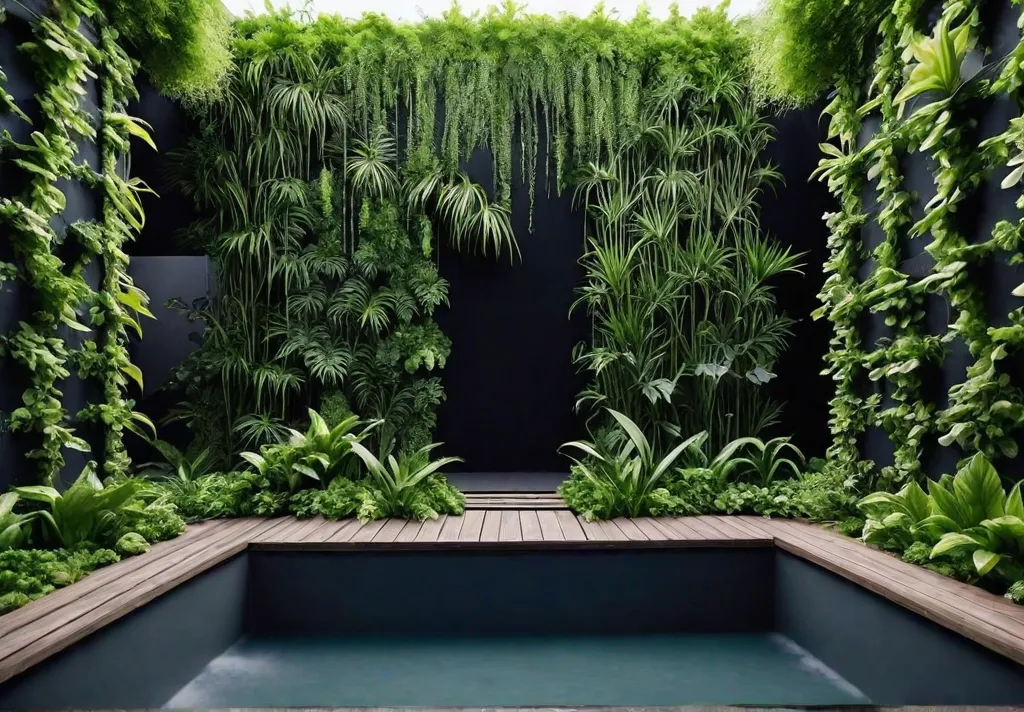Do you dream of growing fresh, flavorful vegetables but feel limited by your available outdoor space? You’re not alone! As more people embrace the joys of home gardening, there’s a growing interest in finding innovative ways to maximize yield and efficiency, even in small urban settings.
As an Atlanta-based home decorator and DIY enthusiast, I’ve experimented with various vegetable garden layouts. Through trial and error, I’ve discovered some genius techniques to help you maximize your planting space. In this article, I’ll share nine unique vegetable garden designs that inspire your backyard oasis.
Whether you have a sprawling suburban lot or a tiny city balcony, these space-saving, high-yield layouts will have you harvesting an abundance of homegrown goodness in no time. So, get ready to ditch the traditional row-by-row setup and unlock the full potential of your gardening space!
Square Foot Gardening
One of my all-time favorite methods for maximizing vegetable production in a small area is square-foot gardening. This ingenious technique divides your growing space into individual one-foot squares, allowing you to plant the perfect number of each crop within each section.
The beauty of square-foot gardening is that it eliminates wasted space and enables you to grow a surprising variety of veggies, herbs, and fruits in a compact footprint. By carefully spacing your plants, you can cram more into a small plot than traditional row planting.
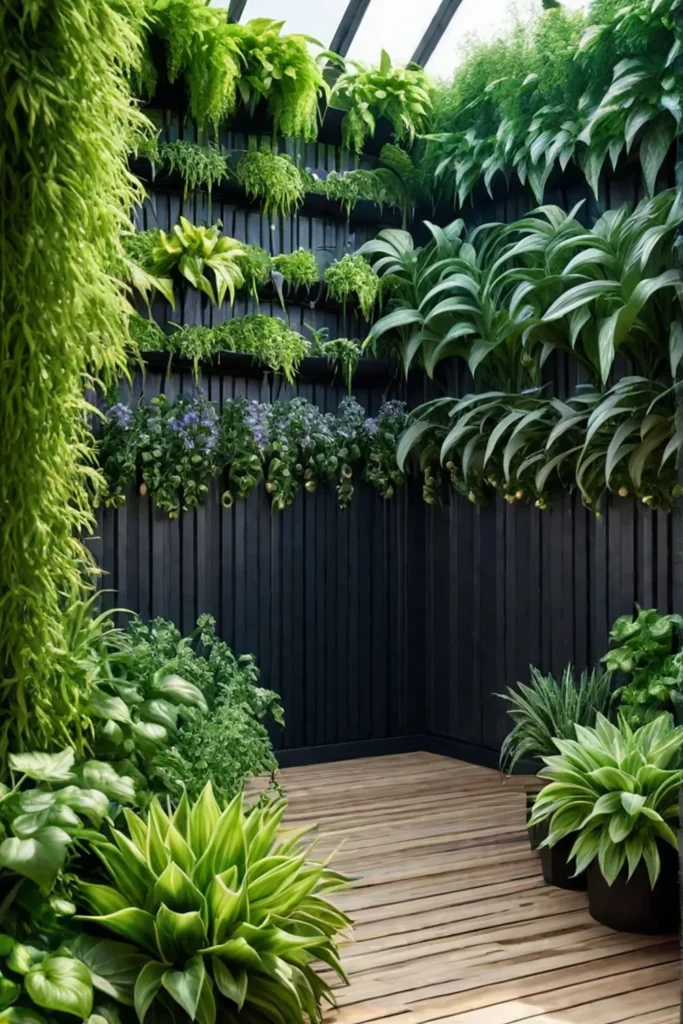
I’ve had great success with square-foot gardens, harvesting an impressive bounty from just a handful of four-by-four-foot raised beds. The structured approach makes it easy to plan your layout, track your plantings, and efficiently rotate crops throughout the season. Plus, the dense planting helps suppress weeds and reduces the need for extensive watering. It’s a game-changer for urban and suburban gardeners alike!
Vertical Gardening
If you’re short on ground space, look up – vertical gardening could be your answer! This ingenious technique involves growing plants upwards using trellises, walls, or other vertical structures. Not only does it save precious square footage, but it also improves air circulation and makes harvesting a breeze.
I’ve seen some impressive vertical gardens, from lush living walls adorning building facades to ingenious hydroponic setups that maximize production in small footprints. One of my favorites was a community garden project that transformed a neglected urban lot into a thriving 32-square-foot vertical oasis, providing fresh produce for the entire neighborhood.
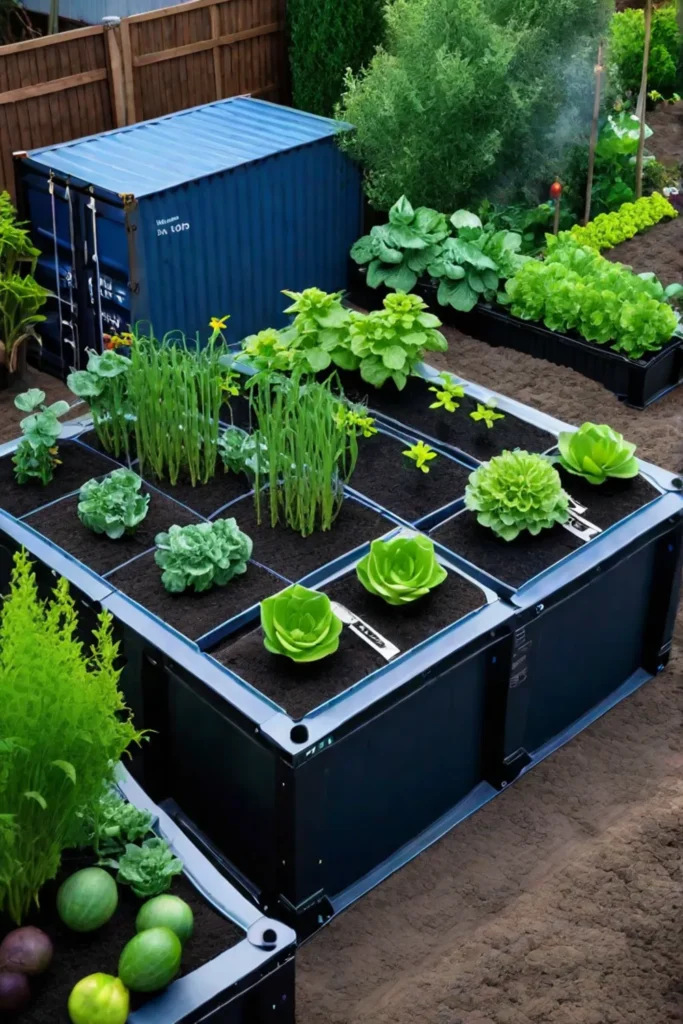
The key to successful vertical gardening is selecting the right plants. Vining crops like cucumbers, pole beans, and tomatoes are natural for climbing structures, while leafy greens and herbs do well in wall-mounted planters. Creativity and the right support system allow you to turn even the tiniest patio or balcony into a vertical vegetable wonderland.
Container Gardening
Need an expansive backyard? No problem! Container gardening is a fantastic option for growing vegetables in small spaces. The possibilities are endless, whether you opt for classic terra cotta pots, sleek modern planters, or even upcycled buckets and barrels.
The key is selecting the right container size for what you want to grow. Smaller pots work great for herbs, greens, and compact veggies like radishes and bush beans, while larger containers accommodate bigger plants like tomatoes, peppers, and eggplants. Be sure to choose a high-quality potting mix that provides adequate drainage to keep your plants thriving.
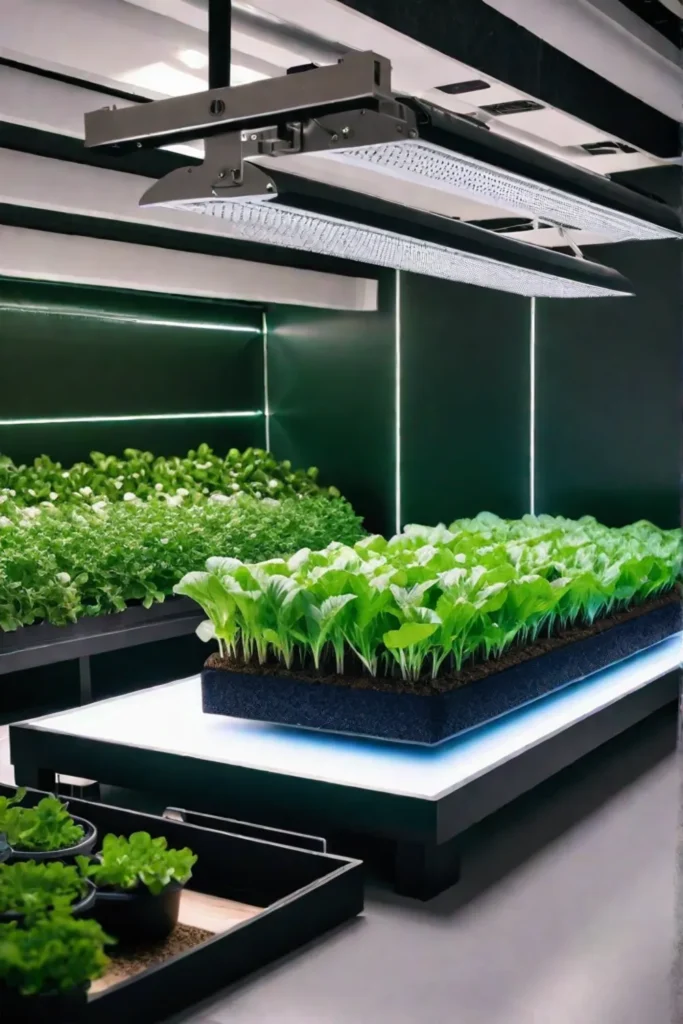
One of the best things about container gardening is its flexibility. You can easily move your pots around to maximize sunlight exposure or tuck them into tight spaces on your patio, balcony, or front porch. With a little creativity, you can create visually stunning arrangements by combining “thriller,” “filler,” and “spiller” plants for a truly eye-catching display.
Raised Bed Gardening
Raised garden beds offer an excellent way to improve soil quality and accessibility in your vegetable patch. By elevating the planting area, you can better control the growing medium, making it easier to amend the soil and prevent compaction. Plus, raised beds are a game-changer for gardeners with limited mobility, eliminating the need for extensive bending and kneeling.
Building a raised bed is a relatively straightforward project that can be customized to fit your available space. I like to use cedar or pressure-treated lumber to create sturdy, long-lasting frames, but you can also opt for stone, brick, or even recycled materials like old tires or pallets. Once your frame is in place, fill it with a nutrient-rich soil mix, and you’re ready to start planting!
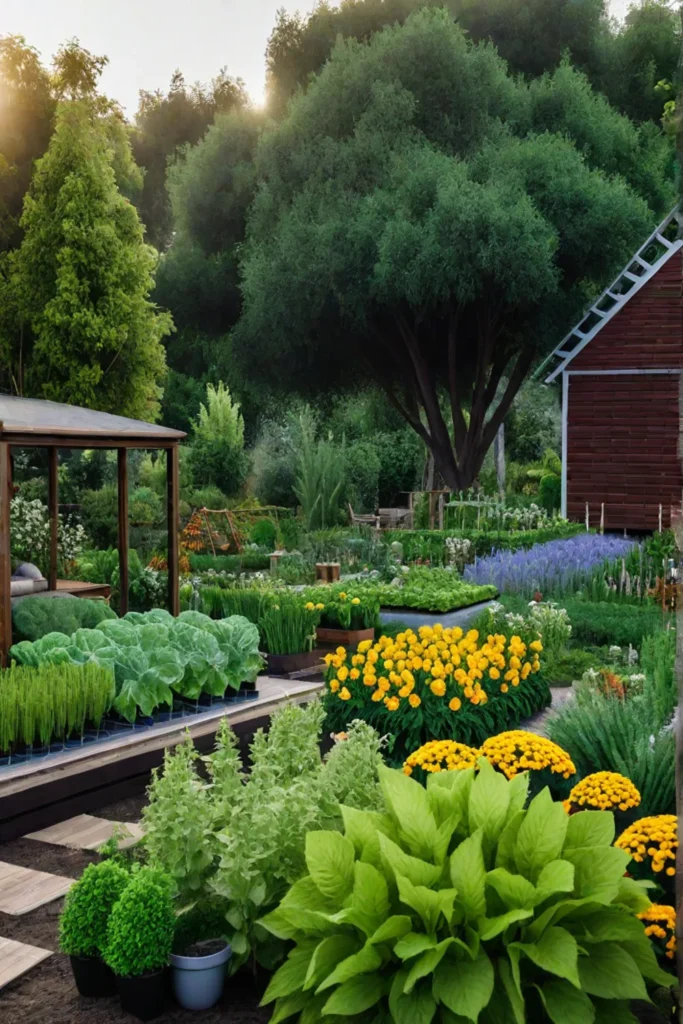
One of the key benefits of raised beds is their ability to boost yields. Studies have shown that vegetables grown in elevated gardens can produce up to 30% more than those in traditional in-ground plots. This is likely due to the improved soil quality and easier access for maintenance and harvesting.
Keyhole Gardens
If you want to maximize your garden’s efficiency, consider the ingenious keyhole garden design. These circular raised beds feature a unique “keyhole” shape, with a path leading to a central compost unit. The compost provides a constant source of nutrients and helps retain moisture, reducing the need for frequent watering.
Keyhole gardens are particularly well-suited for arid climates, as their water-conserving features can help you grow a thriving vegetable patch with just a fraction of the irrigation required for a conventional garden. I’ve seen keyhole gardens used to great effect in urban settings, providing fresh produce for community members in places where land is scarce.
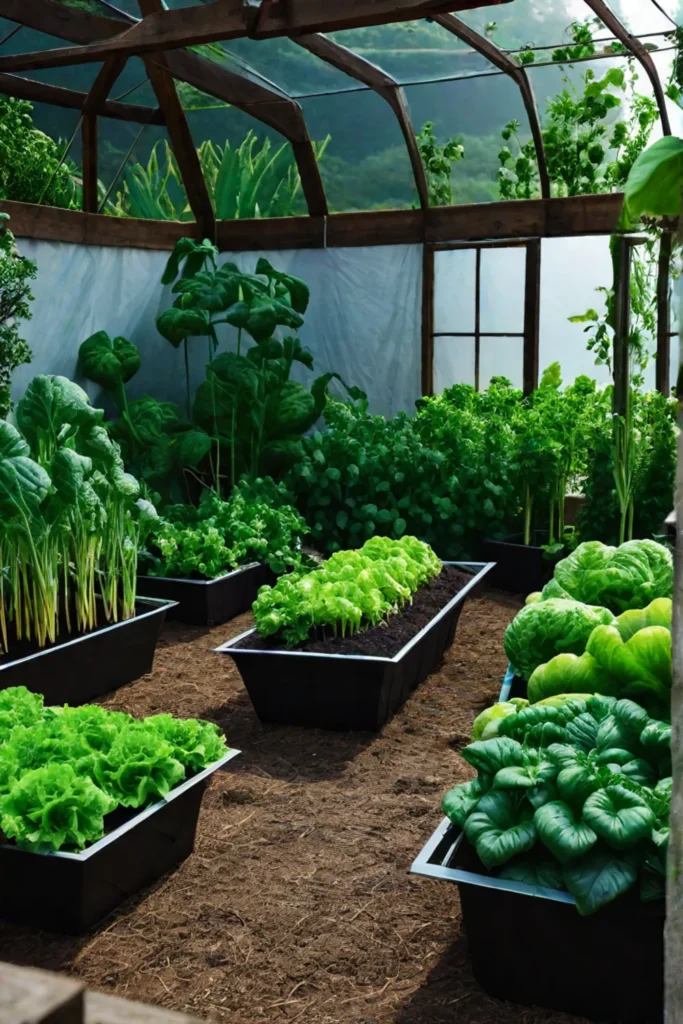
The circular layout of a keyhole garden also makes it easy to access the entire planting area without ever having to step inside. This efficient design helps minimize soil compaction and allows you to maximize the growing space. Plus, the central compost unit adds an eco-friendly twist that helps close the loop on your home’s food waste.
Permaculture Gardening
To improve your vegetable gardening, consider incorporating permaculture principles into your design. Permaculture is a holistic approach that mimics natural ecosystems, focusing on creating a self-sustaining, low-maintenance garden that works harmoniously with the environment.
Companion planting is at the heart of permaculture gardening, where you strategically pair vegetables and herbs to enhance each other’s growth and deter pests. I’ve had great success with classic combinations like tomatoes, basil, and marigolds – the basil deters aphids, while the marigolds help keep nematodes at bay.
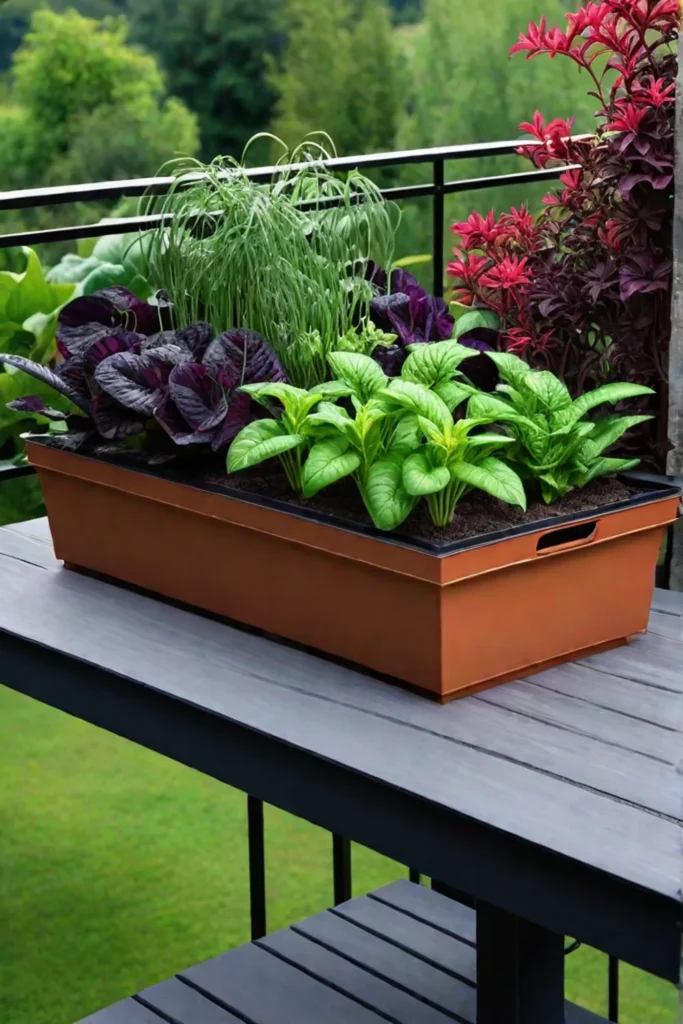
Another key permaculture technique is incorporating vertical elements, such as trellises and arbors, to maximize your growing space. By letting vining crops climb up, you free up valuable ground space for other plants. And don’t forget about incorporating edible perennials, like fruit trees and berry bushes, to create a true “food forest” in your backyard.
The beauty of permaculture gardening is that it’s designed to be self-sustaining, with minimal input from the gardener. By mimicking natural ecosystems, you can create a thriving, low-maintenance vegetable patch that provides a bountiful harvest year after year.
Intercropping and Companion Planting
Companion planting is another brilliant strategy for maximizing garden space. Intercropping and companion planting involves intentionally growing different crops nearby, leveraging their unique characteristics to boost productivity and pest resistance.
One of my favorite examples is the classic “Three Sisters” combination of corn, beans, and squash. The corn provides a natural trellis for the climbing beans, while the squash’s broad leaves help shade the soil and suppress weeds. It’s a win-win-win scenario that maximizes your harvest and creates a diverse, resilient ecosystem in your garden.
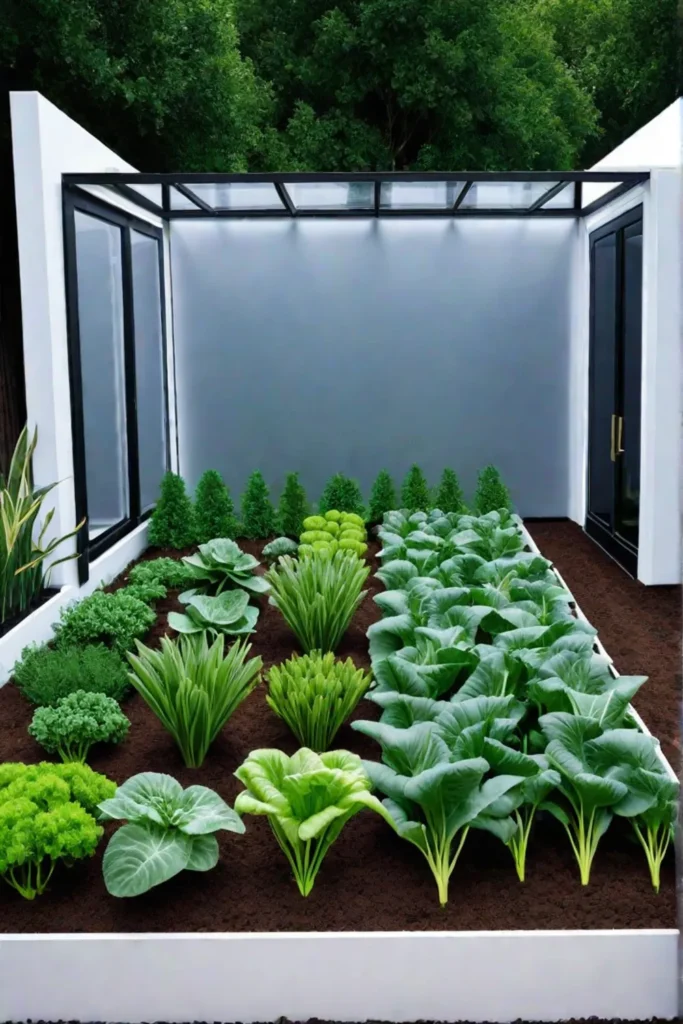
But the benefits of companion planting go far beyond just space-saving. By carefully pairing plants with complementary needs and traits, you can enhance nutrient cycling, improve soil structure, and even deter common pests and diseases. For instance, planting radishes alongside your carrots can help loosen compacted soil and improve aeration for the carrot roots.
The possibilities for successful intercropping and companion planting are endless. With little research and experimentation, you can create custom combinations tailored to your local climate and growing conditions. It’s a surefire way to boost your garden’s productivity and sustainability.
Succession Planting
Consider implementing a succession planting strategy to maximize your vegetable garden’s output. This technique involves strategically staggering your plantings throughout the growing season, ensuring a continuous harvest of fresh produce.
The key to successful succession planting is understanding the maturity timelines of your chosen crops. Planting the same vegetable in small batches every few weeks allows you to enjoy a steady supply rather than a single, overwhelming harvest. For example, I like to sow radish seeds every ten days, starting right after the last spring frost. That way, I can enjoy a constant stream of crunchy, flavorful radishes all summer.
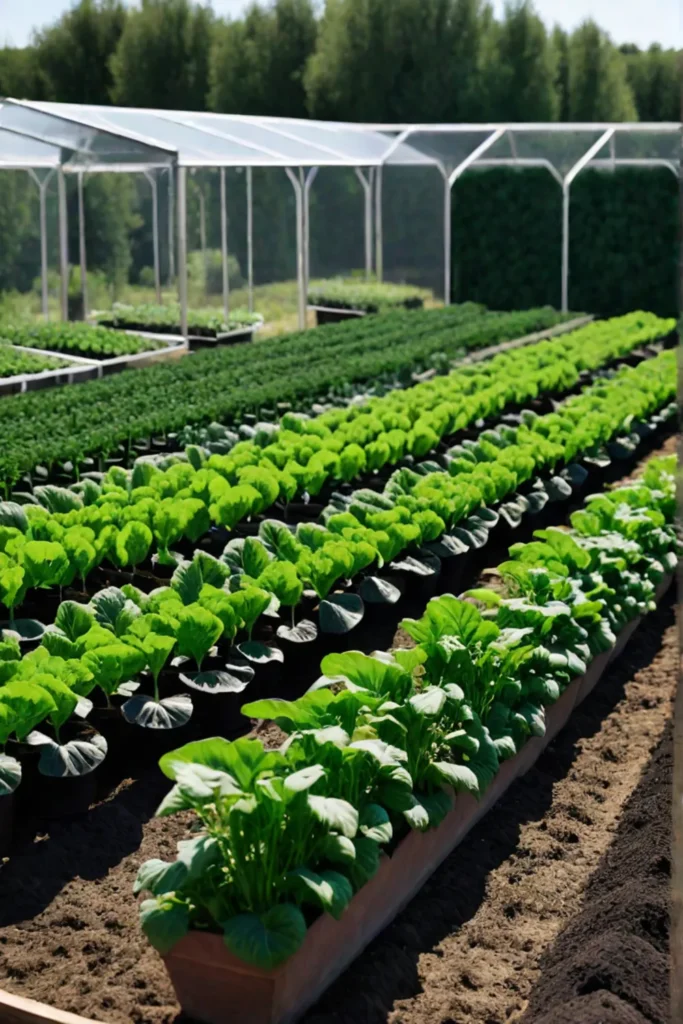
Succession planting also helps you adapt to changing growing conditions. By cycling through different varieties, you can ensure that some of your crops thrive, even if unexpected weather or pest issues arise. It’s a smart way to hedge your bets and maximize your overall yield.
So, feel free to get creative with your planting schedule. With some planning and careful record-keeping, you can keep your vegetable garden producing at peak capacity from spring to fall.
Hydroponics and Aquaponics
Innovative soilless cultivation methods like hydroponics and aquaponics offer exciting possibilities for the truly space-conscious gardener. These advanced systems allow you to grow various vegetables, herbs, and even some fruits without relying on traditional soil-based gardening.
In its simplest form, hydroponics involves growing plants in nutrient-rich water rather than soil. This allows for a highly controlled environment, with customized lighting, temperature, and nutrient delivery tailored to the specific needs of your crops. I’ve seen incredible hydroponic setups, from vertical towers to compact, self-contained units perfect for small patios or balconies.
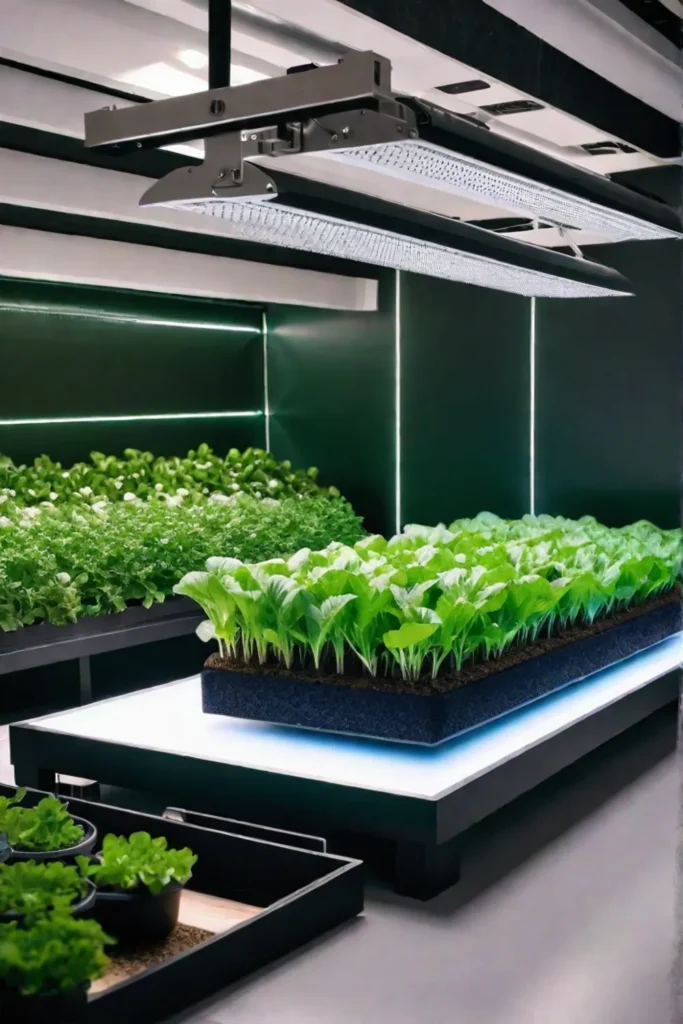
And then there’s aquaponics, which takes things a step further by integrating fish farming into the equation. In an aquaponic system, the nutrient-rich waste produced by the fish provides the perfect food source for your vegetables, while the plants help to filter and clean the water for the aquatic inhabitants. It’s a beautifully symbiotic, closed-loop system that maximizes production in a compact footprint.
Whether you opt for a high-tech hydroponic setup or a more natural aquaponic approach, these soilless cultivation methods offer impressive yields and incredible water efficiency. They’re a game-changer for urban gardeners and anyone looking to maximize their vegetable production in limited space.
Conclusion
As you can see, plenty of innovative vegetable garden layouts and techniques exist to explore. From the structured efficiency of square-foot gardening to the space-saving wonders of vertical and container gardening, the possibilities for maximizing your harvest are endless.
This article has inspired you to think outside the traditional row-by-row vegetable patch and experiment with some of these genius designs. Whether you have a sprawling suburban lot or a tiny city balcony, a space-saving, high-yield layout is perfect for your needs.
So, what are you waiting for? Start planning your dream vegetable garden today, and get ready to enjoy the fresh, flavorful bounty of your backyard oasis. Happy gardening!
